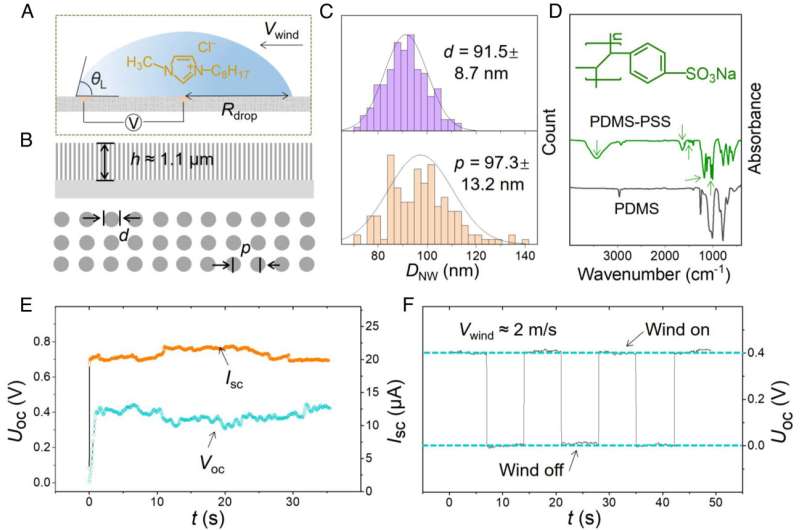September 26, 2023 report
This article has been reviewed according to Science X's editorial process and policies. Editors have highlighted the following attributes while ensuring the content's credibility:
fact-checked
peer-reviewed publication
trusted source
proofread
Using anchored ionic droplets to harvest low-speed wind energy

A team of chemists and engineers affiliated with a host of institutions in China, working with one colleague from the U.S. and another from the U.K., has developed new technology that harvests energy from low-speed wind. In their study, reported in Proceedings of the National Academy of Sciences, the group used anchored ionic droplets to capture energy from low-speed wind movement.
Humans have been using wind as a power source for thousands of years, employing such technology as sails and windmills to capture the energy inherent in the natural flow of air through the atmosphere. In most instances, wind technology has been aimed at harnessing high-speed wind—the harder the better.
But such technology, the team on this effort notes, ignores the energy that could be captured during lulls, or times when the wind speed is low. They have developed a way to capture such energy when the wind is blowing as gently as 0.2 meters per second.
The new technology was based on prior findings that energy could be harvested from the movement of raindrops on a surface by restructuring the charge that exists between the interface and the droplet. To capture this energy, the team added drops of 3-Methyl-1-octylimidazolium chloride onto a substrate that was chosen because of its ability to fix the liquid droplets in place as wind moved over them. The substrate was also fitted with an array of nanowires to carry electrons to a central collector.
In practice, as wind moves over a given droplet, the surface charge is redistributed in circulation fashion, with electrons routed to a nanowire from a tiny electrode. Wind from different directions, they found, created different circulation patterns, each of which led to capture of electrons.
The research team found the device capable of generating 0.84 volts at each droplet. Thus, the amount of energy collected was dependent on the number of droplets used—a system that allows for easy and inexpensive scaling. In their testing effort, they scaled their device up to a point where it was generating 60 volts of electricity.
More information: Shan Peng et al, Low-grade wind-driven directional flow in anchored droplets, Proceedings of the National Academy of Sciences (2023). DOI: 10.1073/pnas.2303466120
© 2023 Science X Network















